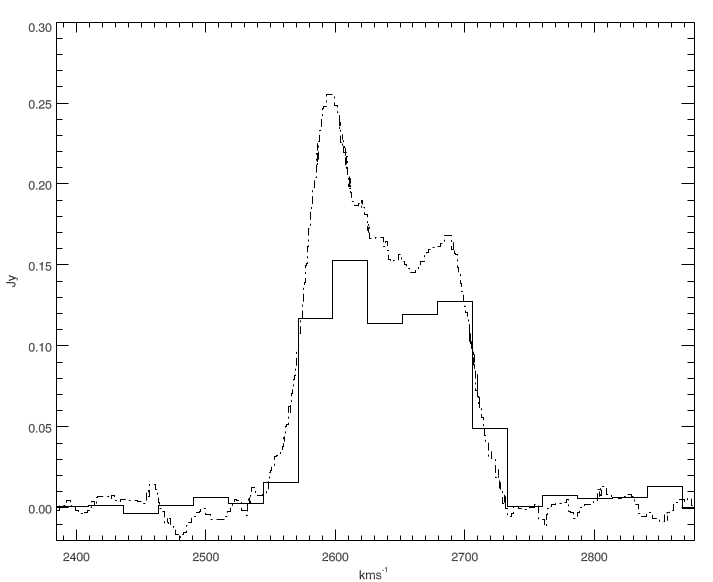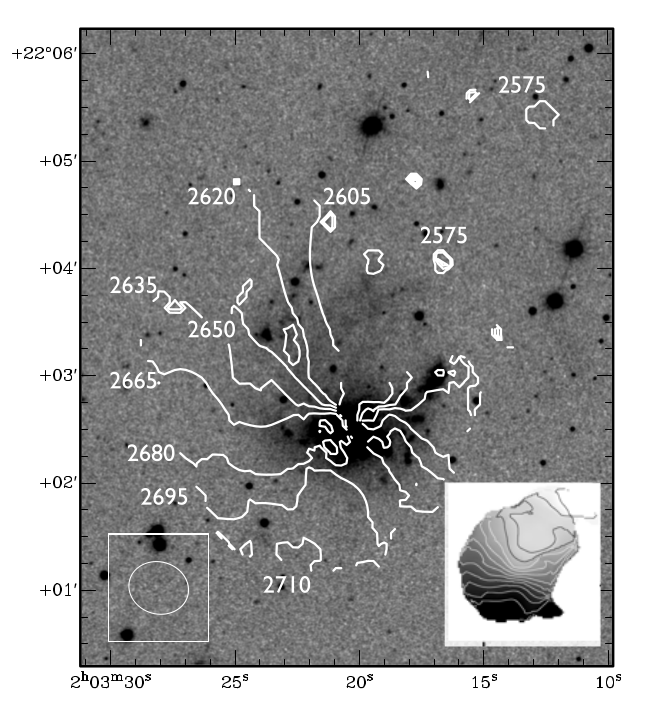HI asymmetry in the isolated galaxy CIG 85 (2012)
Scientific Results
- Positions for CIG galaxies
- Redshift and distances
- Morphologies
- Isolation
- A catalogue of neighbours around isolated galaxies based on POSS I & II images
- Quantification of isolation based on POSS I & II images
- Revision of isolation criteria using the SDSS
- Effects of the environment on galaxies in the..
- Catalogues of isolated galaxies, isolated pairs, and isolated triplets..
- Star formation
- Optical specialization
- Radio continuum properties
- Atomic gas
- Isolated Galaxies
- Environment and faint features of CIG 96: deep optical and HI observations (2018)
- Atomic gas scaling relations (2018)
- A ∼12 kpc HI extension and other HI asymmetries in the isolated galaxy CIG 340 (2014)
- HI asymmetry in the isolated galaxy CIG 85 (2012)
- HI asymmetries in the isolated galaxy CIG 292 (2011)
- Asymmetries in isolated galaxies (2011)
- The large asymmetric HI envelope of CIG 96 (2005)
- Compact groups
- Studies of complementary samples
- Isolated Galaxies
- Molecular gas
- Nuclear activity
HI asymmetry in the isolated galaxy CIG 85
We present the results from the Giant Metrewave Radio Telescope (GMRT) interferometric HI and 20 cm radio continuum observations of CIG 85, an isolated asymmetric galaxy from the AMIGA sample. Despite being an isolated galaxy, CIG 85 showed an appreciable optical and HI spectral asymmetry and therefore was an excellent candidate for resolved HI studies to understand the reasons giving rise to asymmetries in isolated galaxies.
The galaxy was imaged in HI and 20 cm radio continuum using the GMRT. For a detailed discussion of the results we also made use of multi-wavelength data from archival SDSS, GALEX and Hα imaging.
We find the HI in CIG 85 to have a clumpy, asymmetric distribution which in the NW part is correlated with optical tail like features, but the HI velocity field displays a relatively regular rotation pattern.
Integrated HI contours on an SDSS r-band image, where the three faint optical arm like features are marked with red arrows and 020036+21480-b and 020036+21480-c by circles (beam size = 47.1′′ × 37.1′′) where the the HI column density levels are 1020 atoms cm−2 × (0.56, 1.2, 2.2, 3.4, 4.7, 6.0, 6.9, 8.2, 9.4, 11.0). The beam is shown at the bottom right.
HI velocity field contours derived from the high resolution cube on SDSS r-band band image (main panel). The velocity contours are plotted in 15 km s−1 interval. The spatial resolution is 24.3′′ × 21.0′′ with the beam size indicated by the ellipse. Inset panel: low resolution (47.1′′ × 37.1′′ ), systemic velocity subtracted, HI velocity field for CIG 85. The systemic radial velocity is 2640 km s−1 . From white to black, the contours (in km s−1) are 2570, 2580, 2590, 2600, 2610, 2620, 2630, 2650, 2660, 2670, 2680, 2690, 2700, 2710, 2720. The velocity resolution of the cube is ∼26 km s−1.
Evaluating all the observational evidence, we come to a conclusion that CIG 85 is most likely a case of a disturbed spiral galaxy which now appears to have the morphology of an irregular galaxy. Although it is currently isolated from major companions, the observational evidence is consistent with HI asymmetries, a highly disturbed optical disk and recent increase in star formation having been caused by a minor merger, remnants of which are now projected in front of the optical disk. If this is correct, the companion will be fully accreted by CIG 85 in the near future.



